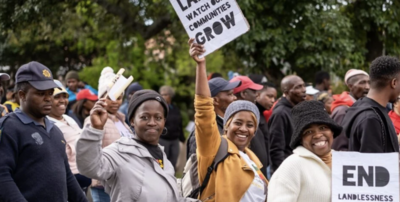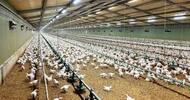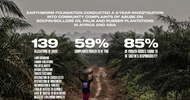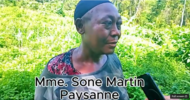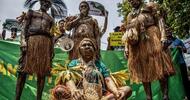Viewing cable 06VIENTIANE596, THE GREAT LAND GRAB
If you are new to these pages, please read an introduction on the structure of a cable as well as how to discuss them with others. See also the FAQs
| Reference ID | Created | Released | Classification | Origin |
|---|---|---|---|---|
| 06VIENTIANE596 | 2006-06-30 06:10 | 2011-08-30 01:44 | CONFIDENTIAL | Embassy Vientiane |
VZCZCXRO5565 PP RUEHCHI DE RUEHVN #0596/01 1810610 ZNY CCCCC ZZH P 300610Z JUN 06 FM AMEMBASSY VIENTIANE TO RUEHC/SECSTATE WASHDC PRIORITY 0067 INFO RUEHBK/AMEMBASSY BANGKOK 6668 RUEHHI/AMEMBASSY HANOI 2687 RUEHGO/AMEMBASSY RANGOON 2138 RUEHPF/AMEMBASSY PHNOM PENH 1799 RUEHBJ/AMEMBASSY BEIJING 1986 RUEHCHI/AMCONSUL CHIANG MAI 0420 RHHMUNA/CDR USPACOM HONOLULU HI
C O N F I D E N T I A L SECTION 01 OF 03 VIENTIANE 000596 SIPDIS SIPDIS DEPARTMENT FOR EAP/MLS, DRL E.O. 12958: DECL: 06/30/2016 TAGS: PGOV SOCI PHUM EAGR PREL LA SUBJECT: THE GREAT LAND GRAB REF: A. VIENTIANE 142 ¶B. 05 VIENTIANE 784 Classified By: Ambassador Patricia M. Haslach, reason 1.4 (b) and (d). ¶1. (SBU) Summary: Economic development is spurring a land grab in broad areas of the country, and the poorest Lao are paying the price. What is feeding the frenzy is a boom in the mining industry and in agricultural commodities, principally rubber and eucalyptus. Foreign investment projects are contributing to the problem; ongoing and planned mega-projects, especially in hydropower, are forcing villagers from their land. Those being dispossessed have little recourse: land ownership is based more on tradition than law, and citizens have no viable means of seeking redress from their government. Dispossession will continue as long as the GoL puts coddling some investors above the welfare of its citizens. End summary. Economic development -------------------- ¶2. (SBU) Laos' economic growth over the past decade has been greatest in sectors supplying commodities to neighboring China and Vietnam. China's search for goods and raw materials of all kinds is fueling a revolution in agriculture in the northern provinces, as farmers abandon subsistence practices to produce for the market. Much the same thing is beginning to happen in the south, where Vietnamese are investing in coffee and rubber. The mining sector is seeing an explosion of activity, as the mining world discovers that Laos has untapped, and largely unexplored, mineral wealth. Private and state-owned companies from Laos' neighbors are also investing in hydropower, as they look to provide energy to their own power-hungry markets. Taking the land --------------- ¶3. (SBU) Investment in these sectors is coming at a price, as poor rural dwellers in some areas face loss of access to, and in some cases dispossession of, their traditional lands. A weak land ownership system is providing a handy loophole for investors, both foreign and domestic, wishing to put land to more "productive" use. Nowhere is the practice more pronounced than in the agricultural sector, where villagers in some areas face loss of their livelihoods through the destruction of forests as investors move in to plant rubber and eucalyptus. The rubber boom is already affecting Laos' far-north Luang Namtha province. Chinese investors, helped by Lao authorities, are taking thousands of hectares of "unused" land, much of it important resources for neighboring ethnic minority villages, and converting it to rubber plantations. Even some areas set aside as National Biodiversity Conservation Areas (NBCAs) are being cleared for rubber. The trend is mirrored in the far south, where Vietnamese investors are clearing large tracts for rubber. ¶4. (SBU) Eucalyptus is the "next best thing" in the agriculture industry. Two major foreign corporations, Japan's Oji Paper Company and India's Aditya Birla Group, have received large concessions, totaling more than 200,000 hectares in the central part of the country, for planting pulp trees. The country director of Oji, Japan's largest paper manufacturing company, told us Oji would rely on district and provincial agricultural officials to designate where the company could plant. In theory only "degraded" or "unproductive" forest land could be used. But the director admitted that Oji would have no influence over this process. A Lao forestry official, echoing these remarks, said measures of "degraded" forest were subjective, and easily manipulated: local officials could designate as "degraded" forests that were in fact healthy and important sources of non-timber forest products (NTFPs) for local villagers. ¶5. (SBU) Rural villagers are also seeing the loss of land to the mining sector. The central government doles out concessions with little apparent consideration for on-the-ground consequences, especially for nearby villagers. And, as with the forest plantations, mining is taking place on lands that are the traditional sources of NTFPs for locals. Even Laos' two world-class mining operations, Australian-owned Oxiana Mining and Phu Bia Mining, have created tensions with local villagers over loss of land, alleged destruction of ancestral graves, and polluted water sources. The impact of Thai, Vietnamese and Chinese mines, VIENTIANE 00000596 002 OF 003 little-regulated by the GoL, has been more profound. One mine, the Vieng Phoukha Cole Mine in Luang Namtha, provides an object lesson. As the mine has expanded, local villagers have lost first their paddy land and finally their homes, with only minimal compensation. ¶6. (SBU) The hydropower sector may have an even bigger impact on village lands. The Nam Theun 2 project, now under construction, is forcing the relocation of about 2,000 villagers, but at least social/environmental mitigation measures associated with the project have ensured adequate resettlement arrangements for these people. Other projects, privately funded, have not contained safeguards. The planned Nam Ngeum 2 Dam will necessitate the relocation of several thousand villagers to distant areas like Muang Feuang district in Vientiane province, infamous for its poor-quality land. The experience of ethnic minority villagers displaced from other dams built in recent years, like the Nam Mang 3 in Vientiane province or the Houay Ho in Attapeu province, demonstrates the government's lack of concern for the welfare of the most vulnerable minorities forced to take up lives in new areas. ¶7. (SBU) Even urban dwellers have been impacted by government policy aimed at making land available to investors at the cost of pushing out the original tenants. Around 200 families, many of them members of the military and police, face eviction from a 40-hectare plot of land bordering Vientiane's international airport, to make way for a Chinese-funded trade center. So far the government has made no announced plans for where the former residents will be resettled. If the past is a guide, they may be relegated to Vientiane's outskirts. Hundreds of people displaced by the construction of the Nong Chanh Park in central Vientiane three years ago were resettled in a dusty field miles from the city, leaving many of them bitter over the experience. The "Boten Golden City," another Chinese investment in Luang Namtha province, has already forced the relocation of three long-established villages to marginal lands (reftels). Weak laws and weak rights ------------------------- ¶8. (SBU) Weak land ownership laws is a major factor in this phenomenon. Laos is one of the least-populated countries in Southeast Asia, at 27 persons per square kilometer. Low population density has meant that, for centuries, villages were free to exploit nearby lands without competition. Villagers rely heavily on nearby forests for their livelihoods: NTFPs are a major source of food and materials in all rural areas. But the country has never developed a clear-cut system of land ownership. Land titles, even in the cities, are a recent phenomenon. In rural areas they are by-and-large non-existent. Farmers have by tradition "owned" lands by agreement from others in the village, with fields handed down through generations by consensus. ¶9. (SBU) The Lao government has made only weak efforts to address the problem. Beginning in 1989, the government undertook a program of land-forest allocation, to formalize what had up to then been very informal arrangements of land ownership. A 1997 Land Law furthered the process, establishing transfer and inheritance of land and guaranteeing rights of citizens to own and use land. Both laws were designed in part to address concerns over deforestation, and discouragement of swidden agriculture, a traditional farming practice seen by the government as contributing to forest destruction. The Australians have tried to assist the process of providing permanent title to land through a long-term "land titling project," aimed at giving deeds to Lao for their property. But this project has emphasized urban areas, and has hardly scratched the surface of land ownership outside Vientiane and a few major cities. ¶10. (SBU) Making matters worse, Lao citizens have no way to seek redress for loss of their land. Although the 1997 Land Law acknowledges private ownership of land, the concept remains foreign to most Lao officials, who regard the state as the ultimate owner. The National Assembly in theory provides a forum for Lao to bring their grievances; National Assembly members hear concerns of their constituents and bring them to the government. In practice this system breaks down: the UN, which conducts a large project to improve the Assembly's responsiveness, has identified constituent services as one of the Assembly's critical shortcomings. VIENTIANE 00000596 003 OF 003 ¶11. (SBU) Ignorance and greed may be the biggest factors working against the victims. The Lao government is keen to attract investment dollars to meet economic growth goals, regardless of local consequences. Anecdotally, government officials at both the central and provincial level have a plate of tricks to benefit from concessions, for example selling off logs from areas designated as degraded forest. District and provincial officials, who in the case of plantation forests are the ones determining areas to be planted, have unchallenged authority in their areas. Local governments and courts in effect have the final say on matters of land jurisdiction and often have strong incentive to divest poor villagers of their land, both for personal and "official" reasons. Faced with the power of the state, villagers have no recourse but to accept their losses. Comment ------- ¶12. (C) Intent on giving an open door to some foreign investors, the government has few compunctions about trampling on its own citizens, ignoring their traditional lands and livelihoods and utter dependence on their environment for their survival. In the near-absence of meaningful rule of law, those affected are at the mercy of sometimes venal, usually uncaring, bureaucrats administering the land use system. As Laos' reputation grows as an "easy" place for investors in sectors like hydropower, plantation forests and mining, more and more of Laos' poorest citizens are likely to find themselves dispossessed of their traditional lands. End comment. HASLACH


